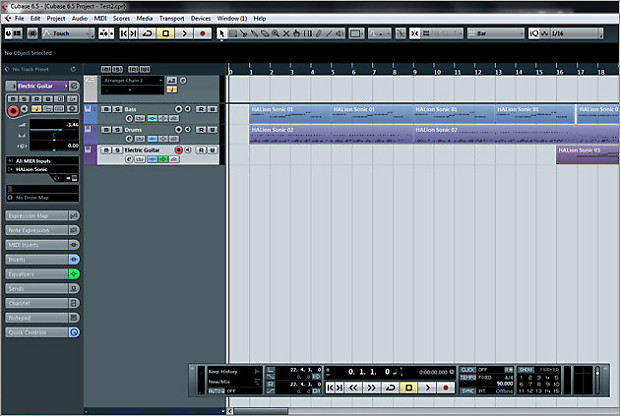

- Fast guide to cubase 7 install#
- Fast guide to cubase 7 upgrade#
- Fast guide to cubase 7 software#
- Fast guide to cubase 7 download#
Brilliant! (The icing on the cake here would be if there was a key command to open this pop-up.)Īnother feature that's handy when working in large projects is described in Cubase 7's marketing literature as "MemZap”. You can then jump to your required track either by clicking or using the cursor keys and pressing Return. As you type into the text field at the top of the pop-up, the list is filtered for tracks containing the search string. Simply click the magnifying glass icon at the top of the Track List, and a pop-up is displayed that shows all the tracks in your project. This is helpful when you have a large number of tracks in a project, as is the new ability to search the Track List. The transport icons that have graced the program since version 2 have been replaced by Nuendo's more conventionally styled alternatives, and the Track Control buttons now have a firmer outline with white highlights, making them stand out a little. I'm not sure why anyone would want to work in this out-of-the-box colour scheme (especially in the Key Editor, which has become ridiculously dark and obscure), and although you can fiddle around with the colour scheme in the Appearance Preferences, I still couldn't quite get back to the chromatic choices I liked in Cubase 6.5.

As you type into the search field, the list of tracks displayed is filtered to show only those containing the search string.Once you create or open a Project, you'll notice that Cubase is, at least by default, a little darker and a little greyer, and you'll have to remember that you're not actually wearing blue-tinted glasses.
Fast guide to cubase 7 upgrade#
Thankfully, though, the Steinberg Hub can be disabled in General Preferences so that Cubase reverts to the older Project Assistant window.įor those who work with large track counts, Cubase 7's handy track search function might be worth the price of the upgrade alone. Since it paints a grey gradient over every display attached to your system, opening the Hub (which happens every time you create a new Project) on a multi-display system can become quite a jarring experience. This is all very helpful, except that I wonder why Steinberg felt that the Hub needs to be full-screen. The first new thing you'll see upon launching Cubase 7 is the Steinberg Hub, a full-screen view incorporating the old Project Assistant with a new 'news and tutorials' section that pulls content from Steinberg's servers.
Fast guide to cubase 7 install#
This is basically a good move, since it means you'll always install the latest version, although it could be frustrating if you ever want to install the program in a situation where you don't have access to an Internet connection.
Fast guide to cubase 7 download#
One slight change is that the installer now downloads the latest Cubase build from the Web during installation, so you'll need to make sure your computer has an Internet connection (or, alternatively, you can download this core Cubase installer from another computer and run it after the main installer has finished). Installing Cubase 7 is relatively easy, and, as with previous major releases, it's possible to install Cubase 7 without disrupting an earlier 6.5 installation. And, as ever, there's a host of smaller improvements including workflow-enhancing tools, new plug-ins, and much, much more. Secondly, a new Chord Track enables musicians to explore harmonic progressions in different ways.

Firstly, there's a redesigned mixer called, appropriately enough, MixConsole, which represents a radical departure from the virtual mixers both in previous versions of Cubase and, in some ways, other applications. This time, the two most significant new features seem to go deeper into the program than any of the aforementioned developments. So what better way for Steinberg to celebrate a decade of the modern Cubase era than to release a major new version? Cubase 4 dropped the 'SX', adding VST 3 support and Media Bay, Cubase 5 gave us VariAudio and Expression Maps, and Cubase 6 took this even further with Note Expression. SX2 presented the Time Warp tool and saw the return of much classic Cubase functionality, while SX3 extended warping to audio and introduced the Arranger Track, Device Panels and in-place editing. It's been 10 years since Steinberg introduced Cubase SX to the world, and since then the program has changed a great deal.
Fast guide to cubase 7 software#
Steinberg's DAW software has received perhaps its biggest shake-up to date, with a redesigned mixer and some clever chord functions.


 0 kommentar(er)
0 kommentar(er)
